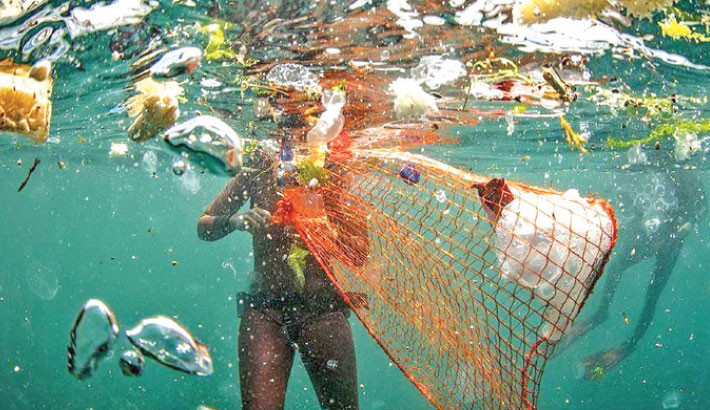Microplastics posing severe threat to Dhaka’s rivers
Arghya Protik Chowdhury
Published: 02 Mar 2025

Representative Image
Dhaka, one of the most densely populated cities in the world, is facing an alarming environmental crisis—microplastic pollution in its rivers. According to data in 2022, the city generates approximately 6,000 to 7,000 tons of solid waste daily, with plastic waste accounting for around 10% of the total amount. Over time, this plastic waste degrades into microplastics —tiny plastic particles smaller than 5 millimetres — that pose a serious threat to both the environment and human health. Recent studies reveal that Dhaka’s major rivers, including the Buriganga, Turag and Shitalakshya, contain dangerously high levels of microplastic contamination.
Shocking levels of river contamination
Research indicates that microplastic pollution in Dhaka’s rivers far exceeds levels recorded in many other global water bodies. The Buriganga River alone contains between 50,000 and 120,000 microplastic particles per cubic meter of water. In the Turag River, this figure reaches 80,000, while the Shitalakshya River holds approximately 60,000 particles per cubic meter. In comparison, China’s Yangtze River contains around 40,000 microplastic particles per cubic meter, while Europe’s Rhine River records just 20,000.
The primary sources of this pollution are the vast amounts of plastic waste generated daily in Dhaka, much of which ends up in rivers due to improper waste management. During the monsoon season, heavy rainfall washes large quantities of plastic debris into the water. Once in the river, mechanical friction, sunlight exposure and chemical reactions break down plastic into smaller fragments. Over time, these fragments further degrade into microplastics, which then become embedded in aquatic ecosystems, threatening marine life and eventually entering the human food chain.
Health and environmental risks
Microplastics not only contaminate water but also act as carriers of toxic substances, including heavy metals like lead (Pb), cadmium (Cd) and mercury (Hg). These harmful elements can cause neurological damage and increase the risk of cancer in humans. Additionally, microplastic particles interact with cell membranes, triggering cell death (apoptosis) and oxidative stress, which can damage DNA, proteins and lipids within the body.
Furthermore, microplastics contain hazardous chemicals such as plasticizers, bisphenol A (BPA), phthalates and brominated flame retardants. When these chemicals leach into the human body, they can cause severe health problems. For example, BPA is an endocrine disruptor that affects hormonal balance and has been linked to obesity, cardiovascular diseases and reproductive disorders.
Solutions to combat microplastic pollution
To tackle the growing crisis of microplastic pollution in Dhaka’s rivers, a comprehensive waste management system must be established. This should include efficient plastic collection, recycling and disposal mechanisms. Stricter enforcement of plastic bans, along with the promotion of eco-friendly alternatives, is also crucial. Raising public awareness about the dangers of plastic waste can encourage responsible consumption and disposal practices. Additionally, manufacturers must be held accountable for plastic waste management, ensuring sustainable production practices.
Long-term solutions also require further research to understand the full impact of microplastic pollution and the development of policies to mitigate its effects. Through strong government action and collective public efforts, Dhaka can combat this environmental threat and ensure a cleaner, healthier future for the coming generations.
The writer is a student at Department of Environmental Science, Bangladesh University of Professionals

